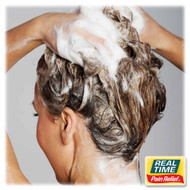Navigating the Suds: Understanding Sodium Lauryl Sulfate (SLS) and Sodium Laureth Sulfate (SLES) in Personal Care Products
1st Mar 2024
Introduction:
In the world of personal care products, the desire for effective cleansing often goes hand in hand with concerns about potential irritants. Sodium Lauryl Sulfate (SLS) and its milder variant, Sodium Laureth Sulfate (SLES), are common foaming agents found in many skincare and haircare products. However, for some individuals, these ingredients are notorious for causing skin irritation. This article aims to shed light on SLS and SLES, their role as foaming agents, and the potential skin irritations associated with their use.
Understanding SLS and SLES:
SLS and SLES are surfactants, which means they are compounds that lower the surface tension between liquids or between a liquid and a solid. In personal care products, they serve as foaming agents, creating the lather that many people associate with effective cleansing. SLS is known for its strong cleaning power, while SLES is often used as a milder alternative.
Foaming Agents and Skin Irritation:
Despite their effectiveness in producing luxurious lather, SLS and SLES are not without controversy. Some individuals, particularly those with sensitive skin, may experience irritation when using products containing these foaming agents. The harsh cleansing action of SLS can strip the skin of its natural oils, leading to dryness and irritation. Additionally, some people may be more prone to allergic reactions to these compounds.
Skin Conditions Aggravated by SLS and SLES:
Individuals with pre-existing skin conditions, such as eczema or psoriasis, may find that products containing SLS or SLES exacerbate their symptoms. The stripping of natural oils and potential irritation can contribute to flare-ups and discomfort. For those with sensitive skin, choosing products without these foaming agents may be a preferable option.
Alternatives to SLS and SLES:
Recognizing the concerns about SLS and SLES, many consumers seek products with alternative foaming agents. The beauty and personal care industry have responded by formulating products with gentler surfactants, such as coco-glucoside, decyl glucoside, or betaines. These alternatives aim to provide effective cleansing without causing the skin irritation associated with SLS and SLES.
Reading Labels for Informed Choices:
To make informed choices about personal care products, consumers should develop the habit of reading ingredient labels. Products that proudly display "SLS-free" or "SLES-free" on their packaging cater to individuals looking to avoid these specific foaming agents. Additionally, exploring products labeled as suitable for sensitive skin may offer alternatives that omit harsh surfactants.
Conclusion:
While SLS and SLES play a significant role in creating a satisfying lather in personal care products, it's essential to recognize their potential for skin irritation, particularly for individuals with sensitive skin or existing skin conditions. As consumers become more conscious of the ingredients in their skincare routines, the availability of SLS and SLES-free alternatives provides options for those seeking a gentler cleansing experience. By staying informed and reading labels, individuals can make choices that align with their skincare needs and preferences, ensuring a healthy and comfortable skincare routine.
Resources/References:
- American Academy of Dermatology. "How to care for your skin if you have eczema."
[https://www.aad.org/public/diseases/eczema/skin-care] - Cosmetic Ingredient Review. "Final report on the safety assessment of sodium lauryl sulfate and ammonium lauryl sulfate."
[http://www.cir-safety.org/sites/default/files/sls082014rep.pdf] - DermNet NZ. "Sodium lauryl sulfate."
[https://dermnetnz.org/topics/sodium-lauryl-sulfate/] - Journal of the American College of Toxicology. "Final report of the safety assessment of Sodium Laureth Sulfate and related salts of sulfated ethoxylated alcohols."
[https://journals.sagepub.com/doi/abs/10.3109/10915818309142001]





